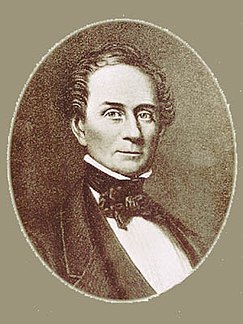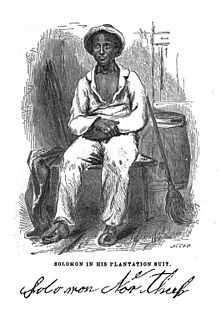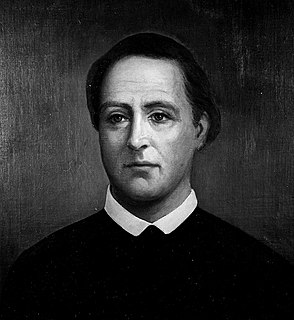Related Research Articles

Maringouin is a town in Iberville Parish, Louisiana, United States. The population was 1,098 at the 2010 census, down from 1,262 at the 2000 census. It is part of the Baton Rouge Metropolitan Statistical Area.

Slavery in the United States was the legal institution of human chattel slavery, primarily of Africans and African Americans, that existed in the United States of America from its founding in 1776 until the passage of the Thirteenth Amendment in 1865. Slavery was established throughout European colonization in the Americas. From early colonial days, it was practiced in Britain's colonies, including the Thirteen Colonies which formed the United States. Under the law, an enslaved person was treated as property and could be bought, sold, or given away. Slavery lasted in about half of U.S. states until 1865. As an economic system, slavery was largely replaced by sharecropping and convict leasing.

The Fugitive Slave Act or Fugitive Slave Law was passed by the United States Congress on September 18, 1850, as part of the Compromise of 1850 between Southern interests in slavery and Northern Free-Soilers.

The domestic slave trade, also known as the Second Middle Passage and the interregional slave trade, was the term for the domestic trade of slaves within the United States that reallocated slaves across states during the antebellum period. It was most significant in the early to mid-19th century, when historians estimate one million slaves were taken in a forced migration from the Upper South: Maryland, Delaware, Virginia, Tennessee, Kentucky, North Carolina, South Carolina, and the District of Columbia, to the territories and newly admitted states of the Deep South and the West Territories: Georgia, Alabama, Florida, Louisiana, Mississippi, Arkansas, and Texas.

Henry S. Johnson was an American attorney and politician who served as the fifth Governor of Louisiana (1824–1828). He also served as a United States representative and as a United States senator.

George Washington Barrow was an American politician and a member of the United States House of Representatives for Tennessee's 8th congressional district.

The history of Georgetown University spans nearly four hundred years, from the early European settlement of America to the present day. Georgetown University has grown with both its city, Washington, D.C., and the United States, each of which date their founding to the period from 1788 to 1790. Georgetown's origins are in the establishment of the Maryland colony in the seventeenth-century. Bishop John Carroll established the school at its present location by the Potomac River after the American Revolution allowed for free religious practice.

Twelve Years a Slave is an 1853 memoir and slave narrative by American Solomon Northup as told to and edited by David Wilson. Northup, a black man who was born free in New York state, details his being tricked to go to Washington, D.C., where he was kidnapped and sold into slavery in the Deep South. He was in bondage for 12 years in Louisiana before he was able to secretly get information to friends and family in New York, who in turn secured his release with the aid of the state. Northup's account provides extensive details on the slave markets in Washington, D.C. and New Orleans, and describes at length cotton and sugar cultivation and slave treatment on major plantations in Louisiana.

St. Thomas Manor (1741) is a historic home and Catholic church complex located near Port Tobacco, Charles County, Maryland. It is now known as St. Ignatius Church and Cemetery. The manor house complex is recognized as the oldest Jesuit residence in the world to have been continuously occupied by that order. The mission settlement of Chapel Point was started in 1641 by Father Andrew White, S.J., an English Jesuit missionary. He administered to the Potapoco Native Americans, some of whom he converted to Catholicism. Established in 1662, this is the oldest continuously active Roman Catholic parish in the Thirteen Colonies of North America founded by Great Britain. With the consecration in 1794 of Bishop John Carroll, St. Thomas became the first Roman Catholic see in the United States.

John McElroy, S.J., was born in Ireland in 1782, and emigrated to the United States in 1803. McElroy enrolled in Georgetown University in 1806, the same year in which he joined the Society of Jesus as a lay brother. His brother Anthony also became a Jesuit. Fr. McElroy assumed the management of Georgetown's financial affairs. He was ordained a priest in 1817. In 1822 he was sent to Frederick, Maryland, where he was to remain for 23 years as pastor of St. John the Evangelist Catholic Church in downtown Frederick. It was in Frederick that he founded St. John's Literary Institution. During the Mexican–American War, McElroy served as an Army chaplain, and on his return from Mexico he went to Boston, where he established Boston College and Boston College High School.

Slavery in Maryland lasted over 200 years, from its beginnings in 1642 when the first Africans were brought as slaves to St. Mary's City, to its end after the Civil War. While Maryland developed similarly to neighboring Virginia, slavery declined here as an institution earlier, and it had the largest free black population by 1860 of any state. The early settlements and population centers of the province tended to cluster around the rivers and other waterways that empty into the Chesapeake Bay. Maryland planters cultivated tobacco as the chief commodity crop, as the market was strong in Europe. Tobacco was labor-intensive in both cultivation and processing, and planters struggled to manage workers as tobacco prices declined in the late 17th century, even as farms became larger and more efficient. At first, indentured servants from England supplied much of the necessary labor but, as their economy improved at home, fewer made passage to the colonies. Maryland colonists turned to importing indentured and enslaved Africans to satisfy the labor demand.
William Ellison Jr., born April Ellison, was a U.S. cotton gin maker and blacksmith in South Carolina, and former African-American slave who achieved considerable success as a slaveowner before the American Civil War. He eventually became a major planter and one of the medium property owners, and one of the wealthiest property owners in the state. According to the 1860 census, he owned 63 black slaves, making him the largest of the 171 black slaveholders in South Carolina. He held 40 slaves at his death and more than 1,000 acres (400 ha) of land. From 1830-1865 he and his sons were the only free blacks in Sumter County, South Carolina to own slaves. The county was largely devoted to cotton plantations, and the majority population were slaves.
Anne Marie Becraft was an American educator and nun. One of the first African-American nuns in the Roman Catholic Church, she established a school for black girls in Washington, D.C.

In 1838, 272 men, women, and children were sold by the Maryland Jesuits; a portion of the proceeds was used to pay the debts of Georgetown College, also run by the Jesuits. The slaves had lived on plantations belonging to the Jesuits in Maryland, and they were sold to Henry Johnson and Jesse Batey. The sale price was $115,000, equivalent to $2,761,078 in 2019. Of the $25,000 down-payment, $17,000 was used to pay down building debt that Thomas F. Mulledy, the provincial superior who orchestrated the sale, had accrued as president of Georgetown College.

Thomas F. Mulledy was an American Catholic priest from Virginia who became the president of Georgetown College, a founder of the College of the Holy Cross, and a prominent 19th-century leader of the Jesuits in the United States. His brother, Samuel Mulledy, also became a Jesuit and president of Georgetown.
The role of slavery at American colleges and universities has been a focus of historical investigation and controversy. Enslaved people labored to build institutions of higher learning and the slave economy was involved in funding many universities. Slaves were used to build academic buildings and residential halls. The economics of slavery brought some owners great wealth and empowered some slave owners to become major donors to fledgling colleges. Slaves were also sold by university administrators to facilitate needed capital. It was also not uncommon for wealthy students to bring a slave with them to college. Many colleges founded in states with legalized slavery utilized slaves and benefited from the slave economy. In Northern states, despite slavery being considered more of a Southern institution, some colleges and universities benefited from the labor of slaves and profits from slavery.

James A. Ryder was an American Catholic priest and Jesuit who became the president of several Jesuit universities in the United States. Born in Ireland, he immigrated with his widowed mother to the United States as a child, to settle in Georgetown, in the District of Columbia. He enrolled at Georgetown College and then entered the Society of Jesus. Studying in Maryland and Rome, Ryder proved to be a talented student of theology and was made a professor. He returned to Georgetown College in 1829, where he was appointed to senior positions and founded the Philodemic Society, becoming its first president.

William McSherry was an American Catholic priest who became the president of Georgetown College and a prominent 19th-century leader of the Jesuits in the United States. The son of Irish immigrants, McSherry was educated at Georgetown College, where he entered the Society of Jesus. As one of the first Americans to complete the traditional Jesuit course of training, he was sent to Rome to be educated for the priesthood. There, he made several discoveries of significant, forgotten holdings in the Jesuit archives, which improved historians' knowledge of the early European settling of Maryland and of the language of Indian tribes there.

Samuel A. Mulledy was an American Catholic priest and Jesuit who served as president of Georgetown College in 1845. Born in Virginia, he was the brother of Thomas F. Mulledy, who was a prominent 19th-century Jesuit in the United States and a president of Georgetown. As a student at Georgetown, Samuel was one of the founding members of the Philodemic Society, and proved to be a distinguished student, which resulted in his being sent to Rome to complete his higher education and be ordained to the priesthood. Upon his return to the United States, he became the master of novices at the Jesuit novitiate in Maryland, before being named president of Georgetown. He sought to be relieved of the position after only a few months, and returned to teaching and ministry.
References
- ↑ "Advertisement for the Sale of Jesse Batey's Estate". Daily Picayune. Georgetown Slavery Archive. February 18, 1852. Retrieved February 2, 2018.
- ↑ "Louisiana Cotton Land for Sale or Barter". Washington Globe. Georgetown Slavery Archive. May 29, 1838. Retrieved February 2, 2018.
- ↑ Bill of sale for 64 slaves from Thomas Mulledy to Jesse Batey. Georgetown Slavery Archive. November 10, 1838. Retrieved February 2, 2018.
- ↑ "Advertisement for Barrow & Armstrong Succession Sale". Southern Sentinel. Georgetown Slavery Archive. February 23, 1856. Retrieved February 2, 2018.
- ↑ Champomier, P.A. (1861). Statement of the Sugar Crop Made in Louisiana in 1860-1861. Georgetown Slavery Archive.